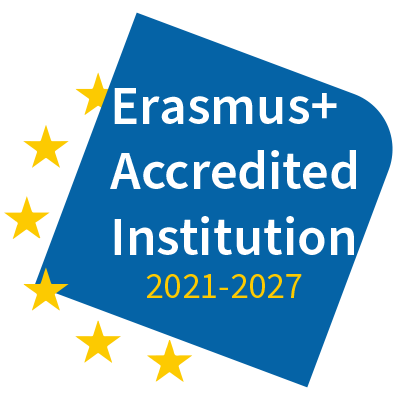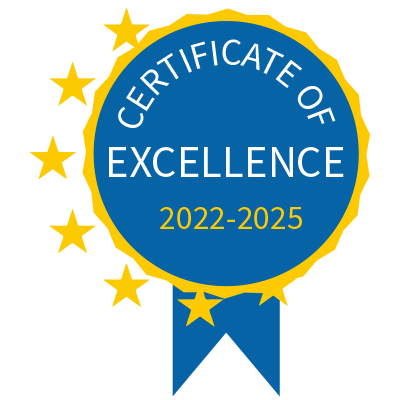
Erasmus projects are initiatives within the European Erasmus+ Programme, which aim to promote cooperation and mobility among institutions in the fields of education, training, youth and sport.
These projects enable students, young people and educational staff to participate in exchange, training, teaching and learning experiences in different European countries, thus contributing to the personal and professional growth of the participants and to the promotion of greater European integration and understanding.
Types of Erasmus projects
The Programme is built around three key actions:
Key Action 1 – KA1 promotes the mobility of students, youth workers and young people in general, sending them to other participating countries or welcoming students and staff;
Key Action 2 – KA2 promotes the development of the education, training and youth fields through knowledge exchanges among organisations;
Key Action 3 – KA3 aims to increase the participation of young people in political life.
In this article, we will take a closer look at Key Action 1, we will see which mobility projects it includes and how to submit a project of this type.
What are KA1 projects?
Key Action 1 (KA1) promotes the mobility of students, staff, youth workers and young people.
The Erasmus Programme provides an enhanced grant to support long-term mobility participants to improve their foreign language skills, before and during their stay abroad.
The participating organisations may plan to send students and staff to other participating countries or welcome students and staff from abroad by organising teaching, training and volunteering activities.
What kind of KA1 projects are there?
Key Action 1 supports several mobility projects, which may vary according to the field in which the applicant organisation operates.
For example, in the field of education and training we can find:
Mobility projects for higher education students and staff, during which students can either study abroad or carry out traineeship in an enterprise, whereas the teaching staff can teach, assist or job-shadow a colleague in a higher education institute;
Mobility projects for VET learners and staff (ErasmusPRO), for learners or recent graduates (up to 12 months after graduation) attending initial and continuing vocational education and training courses;
Mobility projects for pupils and schools staff, helping pupils discover different cultures, languages and school systems and supporting the school staff in improving the quality of their teaching through learning about different teaching practices;
Mobility projects for adult education staff and learners, involving teachers, principals, trainers, adult learners and staff of the sending organisation in projects where they can learn, grow professionally and develop their skills.
In the field of youth we find:
Mobility projects for young people – ‘Youth Exchanges’, which bring together young people from different countries to carry out exchanges and experience contexts other than formal education;
Mobility projects for youth workers, where organisations can implement projects that include one or more activities for the professional development of youth workers;
Youth participation activities, i.e. groups of young people carrying out projects on active participation in democratic life at a local, regional, national and European level;
DiscoverEU action for inclusion, to enable even young people with fewer opportunities to experience a short trip to Europe.
Finally, we also find mobility projects in the field of sport, in particular staff mobility, aiming to promote physical activity, a healthy lifestyle and common European values.
Erasmus accreditation
In order to participate in Key Action 1 (KA1) projects, it is essential to obtain an Erasmus accreditation (identified by the code KA120), a prerequisite for organisations interested in offering international mobility projects.
This accreditation certifies that the organisations have developed a long-term strategy and meet high European quality standards in the field of educational and youth mobility.
The applicant organisation must have an establishment in an EU Member State and submit a detailed Erasmus+ plan, setting out its long-term strategy and subscribing to the European quality standards for the implementation of mobility activities.
After obtaining the accreditation, which can be requested either as an individual institute or as a consortium coordinator (a group of institutes), it is sufficient to submit an annual budget request to the Erasmus+ National Agencies.
Grant application (KA121)
After the accreditation application has been approved, the next step is to apply for a grant: this application is also known as KA121.
The grant is a subsidy calculated on a unit cost basis, according to specific spending categories: the grant covers the organisational support, travel and accommodation costs for the mobility participants, the training fees for the staff and the linguistic preparation.
The application form needs to include:
Number of mobility, i.e. the number of people who will take part in the Programme;
Profile type, that is students or staff;
Activity type, that is the activities that will be carried out during the project period;
Mobility duration, that is the period in which the mobility will take place.
The organisations should always foster the inclusion of participants with fewer opportunities, for example students or teachers with disability or from disadvantaged socio-economic backgrounds.
Short-term projects (KA122)
Short-term mobility projects, also known as KA122, include those organisations which never worked with European projects before (no accreditation is needed to have access to these projects); they represent a simple way to participate in the Erasmus+ Programme.
A crucial prerequisite for the organisations that want to participate in projects of this type is to have an establishment in a country that participates in the Erasmus+ Programme. After having applied, the organisation can proceed by participating in the following types of projects:
Public or private organisations, active in the field of adult education;
Public or private organisation active on the job market, or in the fields of education, training, youth, provided they are actively involved in adult education;
Consortia made up by a coordinating organisation and at least two organisations involved in adult education.
A project can combine different activity types (learners mobility, staff mobility, the ability to host training experts or teachers), with a maximum of 30 participants.
The duration can vary from 6 to 18 months and the project activities must begin from September 1st to December 31st of the same year.
How to find partners for KA1 projects?
The Erasmus Programme offers different tools to find a potential partner:
the European School Education Platform (ESEP) is an online tool to search for partners, offered to the organisations active in the field of VET and school education;
The national Erasmus+ agencies periodically organise contact-building training and cooperation activities or online events (click here to browse through the activities);
the Erasmus+ project results platform, where you can search for accredited organisations and approved projects.
How to submit a KA1 project?
Projects funded by the Erasmus+ Programme must concretely achieve the general and sector-specific objectives.
Therefore, before filling out the proposal, it is good to understand how to develop quality, relevant and sustainable activities.
To get inspiration from projects that have already taken place, you can browse the European platform.
For each project, the themes of the mobility, the type of action and the country where the project took place are indicated; it is then possible to review the project in detail and save the most interesting ones based on the research one is doing.
Another very useful tool to understand how to submit a KA1 project is the Erasmus+ Programme Guide: in this document it is possible to check all the application requirements and the eligible activities, participants and locations.














